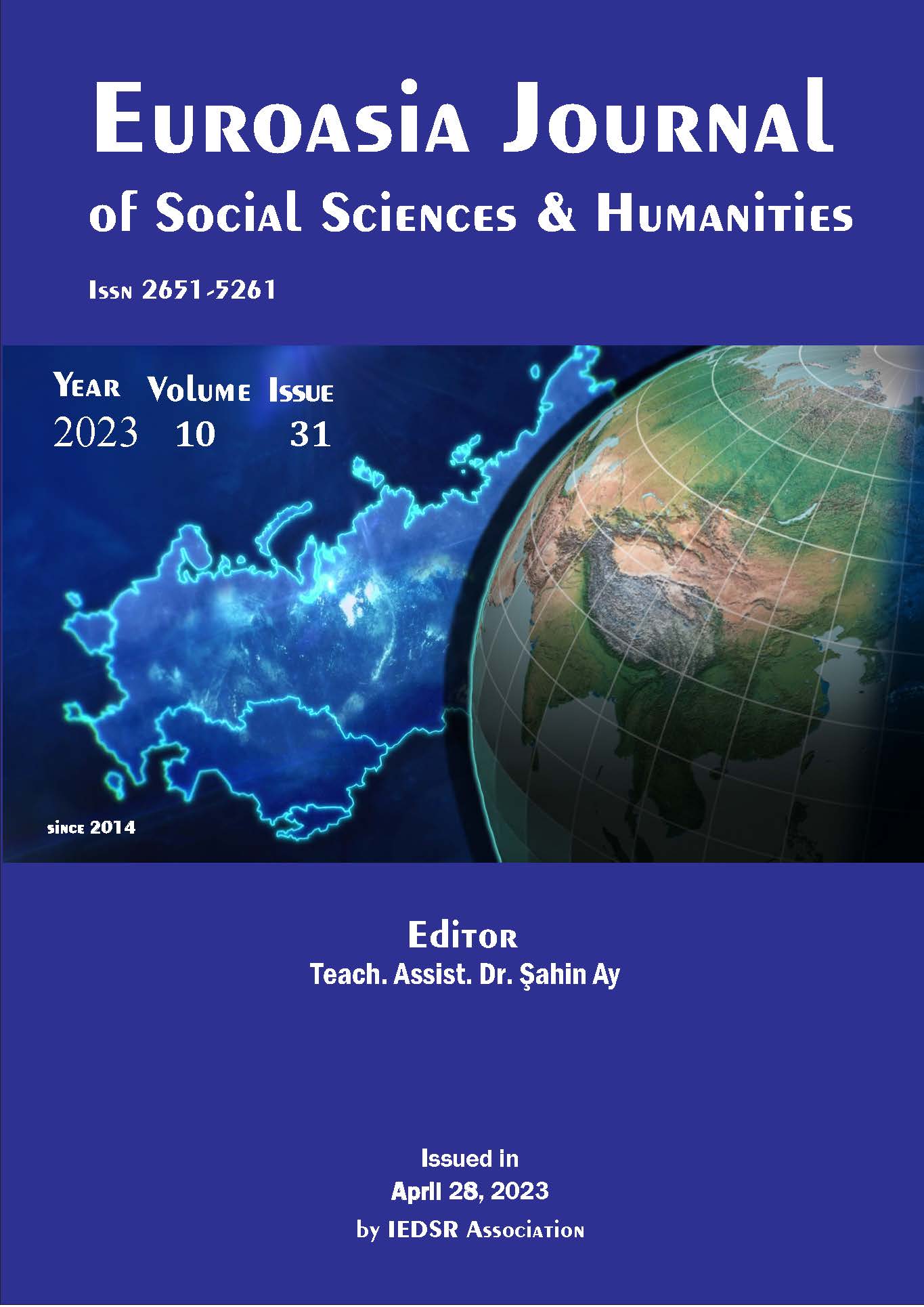The Views of Efl Preparatory Students on the Use of Mobile Devices in Language Learning
DOI:
https://doi.org/10.5281/zenodo.7942143Keywords:
Mobile learning, mobile devices, Internet-based dictionaryAbstract
The use of technological devices in language education is a necessity because it is almost impossible to perform listening and speaking skills independently of technology. In this study, the answers of 25 students studying at the School of Foreign Languages in the 2021-2022 academic year at Van Yüzüncü Yıl University to a questionnaire which is prepared with Google Forms and contains five open-ended questions were analysed with the MAXQDA 2020 program. As a result of the analysis made, in line with the opinions of the preparatory students, it is concluded that the use of mobile devices in language education accelerates language learning and thus saves time, the learned information is more memorable, these devices are a significant source of resources, they make learning fun, they enable practice, and they enable ubiquitous learning. In addition, it has been understood that the students mostly use the Tureng dictionary which is from Turkish to English and English to Turkish in the classroom, followed by applications of Cambridge and Oxford dictionaries. Despite the fact that none of the students use a paper-based dictionary in the classroom, it is a surprising result of this study that nearly half of the participants state that the printed dictionary is more advantageous than the online dictionary. Furthermore, it was found that outside of classroom, students who are studying a foreign language spend the majority of their language-developing time using dictionary apps, followed by YouTube, Cake, and Duolingo.
Downloads
References
Aamri, A., & Suleiman, K. (2011). The Use of Mobile Phones in Learning English Language By Sultan Qaboos University Students: Practices, Attitudes and Challenges, Canadian Journal on Scientific & Industrial Research, 2(3), 143-152.
Alemi, M., Sarab, M. R. A., & Lari, Z. (2012). Successful Learning of Academic Word List Via MALL: Mobile Assisted Language Learning, International Education Studies,5(6), 99-109.
Ally, M. (2013). Mobile Learning: From Research to Practice to Impact Education, Learning and Teaching in Higher Education: Gulf Perspectives, 1-10.
Başoğlu, E. B,. & Akdemir, O. (2010). A Comparison of Undergraduate Students' English Vocabulary Learning: Using Mobile Phones and Flash Cards, Turkish Online Journal of Educational Technology-TOJET, 9(3), 1-7.
Bohmer, M., Hecht, B., Schoning, J., Kruger, A., & Bauer, G. (2011). Falling Asleep with Angry Birds, Facebook and Kindle: A Large Scale Study on Mobile Application Usage, Proceedings of the 13th International Conference on Human Computer Interaction with Mobile Devices and Services. Stockholm, Sweden: Paper presented at MobileHCI 2011.
Bouca, M. (2012). Angry Birds, Uncommitted Players, Proceedings of DiGRA Nordic 2012 Conference: Local and Global - Games in Culture and Society. DiGRA.
Cheon, J., Sangno, L., Crooks, S.M., & Song, J. (2012). An Investigation of Mobile Learning Readiness in Higher Education Based on the Theory of Planned Behavior, Computers & Education, 59, 1054-1064.
Corbeil, J.E., & Corbeil, M.E. (2011). Are We Ready for Mobile Learning Now? 2007 Mobile Learning Predictions Revisited, Issues in Information Systems, XII (2), 142-¬‐152.
Darmı, R., & Albıon, P. (2014). A Review of Integrating Mobile Phones for Language Learning, Paper presented at the 10th International Conference Mobile learning.
Irina, A. (2012). A Cell Phone in the Classroom: A Friend or a Foe?, European Association for Computer-Assisted Language Learning (EUROCALL), 17-20.
Kukulska-Hulme, A. (2005). Mobile Usability and User Experience, Mobile Learning: A Handbook for Educators and Trainers, 45-56.
Kukulska-Hulme, A. & Shield, L. (2008). An Overview of Mobile Assisted Language Learning: from Content Delivery to Supported Collaboration and Interaction, ReCALL: Research in Computer-Assisted Language Learning, 20(3), 249–252.
Mahat, J., Ayub, A.F.M., & Wong, S.L. (2012). An Assessment of Students’ Mobile Self-Efficacy, Readiness and Personal Innovativeness towards Mobile Learning in Higher Education in Malaysia, Procedia Social and Behavioral Sciences, 64(9), 284-290.
Miangah, T. M., & Nezarat, A. (2012). Mobile-Assisted Language Learning, International Journal of Distributed and Parallel Systems, 3(1), 309.
Mohammed, T. A., Assam, B. N., & Saidi, M. (2020). The Use of Web 2.0 Tools in the Foreign Language Classroom, Journal of Educational and Social Research, 10(2), 177-177.
O'malley, J. M., Chamot, A. U., Stewner‐Manzanares, G. L. O. R. I. A., Russo, R. P., & Küpper, L. (1985). Learning Strategy Applications with Students of English as a Second Language, TESOL Quarterly, 19(3), 557-584.
Power, R. (2019) Design of Mobile Teaching and Learning in Higher Education: An Introduction, In Zhang, Y., & Cristol, D. (Eds), Handbook of Mobile Teaching and Learning (2nd ed., pp. 3-11). Singapore: Springer.
Saran, M., & Seferoğlu, G. (2010). Supporting Foreign Language Vocabulary Learning through Multimedia Messages via Mobile Phones, Hacettepe University Journal of Education, 38, 252-266.
Sharples, M. (2002) Disruptive Devices: Mobile Technology for Conversational Learning, International Journal of Continuing Engineering Education and Lifelong Learning, 12(5/6), 504-520.
Suwantarathip, O., & Orawiwatnakul, W. (2015). Using Mobile-Assisted Exercises to Support Students' Vocabulary Skill Development, Turkish Online Journal of Educational Technology-TOJET, 14(1), 163-171.
Thornton, P., & Houser, C. (2005). Using Mobile Phones in English Education in Japan, Journal of Computer Assisted Learning, 21(3), 217-228.
Traxler, J., & Kukulska-Hulme, A. (Eds.). (2007). Mobile Learning: A Handbook for Educators and Trainers, Routledge.
Trinder, J. (2007). Mobile technologies and systems, In Traxler, J., & Kukulska- Hulme, A. (Eds.), Mobile Learning: A Handbook for Educators and Trainers, (pp. 23-40). Routledge.
Turbill, J. (2015). Transformation of Traditional Face-to-Face Teaching to Mobile Teaching and Learning: Pedagogical Perspectives, Handbook of Mobile Teaching and Learning, (pp. 221-234), Springer.
Wang, Y. H., & Shih, S. K. H. (2015). Mobile-Assisted Language Learning: Effects on EFL Vocabulary Learning, International Journal of Mobile Communications, 13(4), 358.
Downloads
Published
How to Cite
Issue
Section
License
Copyright (c) 2023 EUROASIA JOURNAL OF SOCIAL SCIENCES & HUMANITIES

This work is licensed under a Creative Commons Attribution-NonCommercial 4.0 International License.

